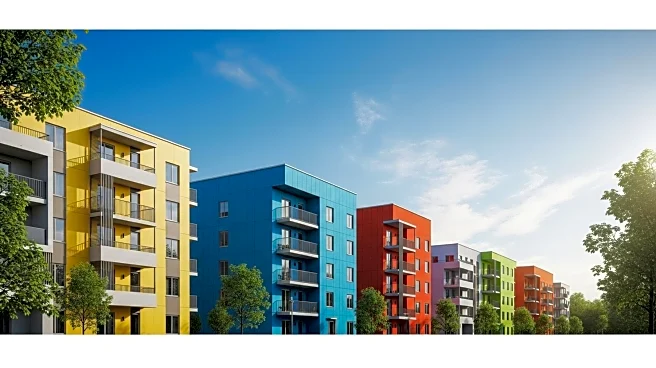What is the story about?
What's Happening?
Apartment rental prices in Redding have remained largely unchanged since last July, according to data from Zumper, a rental marketplace. The median rent for apartments in Redding was $1,463 in July, slightly up from $1,448 in June. This stability is observed across various apartment sizes, from studios to four-bedroom units. One-bedroom apartments saw a slight decrease in median rent from $1,150 in June to $1,100 in July, while two-bedroom apartments maintained a consistent median rent of $1,350. The data includes new constructions but excludes occupied or unavailable listings. Statewide, California's rental prices are slightly higher, with a median of $2,619, while nationwide, the median rent is $1,935.
Why It's Important?
The stability in Redding's rental prices is significant as it contrasts with broader trends in California and nationwide, where rental prices are generally higher. This could indicate a more affordable housing market in Redding compared to other areas. The unchanged rental prices may benefit renters looking for stable housing costs, particularly in a state known for high living expenses. Additionally, the data provides insights into the local real estate market's resilience amidst economic fluctuations, potentially attracting more residents or investors seeking cost-effective housing solutions.
What's Next?
If the trend of stable rental prices continues, Redding may become increasingly attractive to renters seeking affordability in California. This could lead to a gradual increase in demand for housing in the area, potentially influencing future rental prices. Stakeholders such as real estate developers and local government may need to consider strategies to accommodate potential growth in demand while maintaining affordability. Monitoring future data releases from platforms like Zumper will be crucial in understanding ongoing trends and making informed decisions.
Beyond the Headlines
The stability in Redding's rental market may reflect broader economic conditions, such as employment rates and population growth, which can influence housing demand. Additionally, the inclusion of new constructions in the data suggests ongoing development efforts, which could impact future rental dynamics. Understanding these underlying factors can provide a more comprehensive view of the local housing market and its potential evolution.
AI Generated Content
Do you find this article useful?











